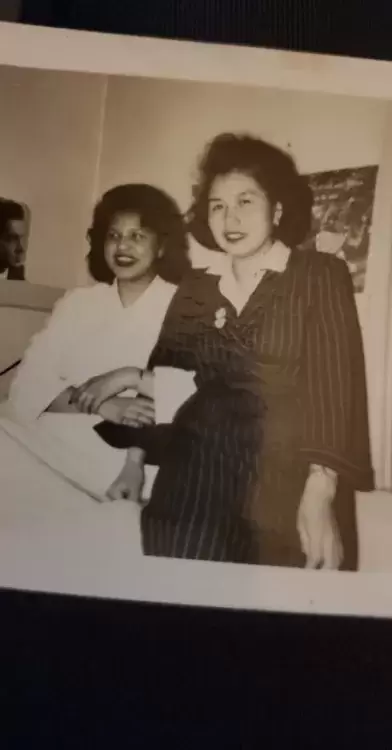A Métis woman who suffered abuse as a child in a federally-run Indian hospital is heading up a class action lawsuit against the Attorney General of Canada. She is seeking compensation for abuses she both suffered and witnessed in Canada’s Indian Hospital system.
Cecile Hardy, Métis Nation member from Edmonton, Alberta, was a patient at Charles Camsell Indian Hospital in 1969 when she was ten years old. The young girl had contracted TB (tuberculosis) and claims she and others were repeatedly sexually abused by medical technicians during her five-month stay at the hospital. In court documents she claims that she was “physically threatened” by a hospital staff member to keep her from reporting the assaults.
Hardy is bringing the lawsuit against Canada on behalf of herself and all Aboriginal people who admitted to Indian hospitals, as well as family members of the patients. The lawsuit covers 29 Canadian Indian hospitals that were in operation between 1945 and 1981 and supported by the federal government.
Hardy, through her legal team, alleges the Indian hospitals were funded, supervised and controlled by the Canadian government to segregate Aboriginal people from the Canadian population.
In addition, it is claimed that the facilities were substandard, overcrowded, poorly staffed and rife with physical and sexual abuse.
According to court documents, Indian hospitals were racially segregated facilities that started out as a way to address the tuberculosis epidemic that was ravaging First Nations populations, but later served as general hospitals for Indigenous peoples in Canada.
Initially, the hospitals were used to isolate Indigenous tuberculosis patients from the general population, because of a fear among health officials that "Indian TB" posed a danger to the non-Aboriginal population.
Indigenous populations were heavily impacted by diseases brought by European settlers, including tuberculosis, smallpox, measles, mumps, diphtheria, typhoid, and influenza. Some theories estimate that exposure to these new diseases reduced the West Coast Indigenous population by as much as 90 per cent.
There were three Indian hospitals that operated in British Columbia: Coqualeetza Indian Hospital, Miller Bay Indian Hospital and Nanaimo Indian Hospital.
Nanaimo Indian Hospital, which operated from 1946 to 1966, took in Indigenous people from Vancouver Island. Formerly an army hospital, the converted buildings were located on property next to what is now Vancouver Island University. The buildings have been demolished and the property is now overgrown and enclosed by a barbed wire-topped chain link fence.
Nanaimo Indian Hospital, with its 210 beds, was the second largest in Canada. There are horror stories of children being tied to their beds for days or even months, only being untied to eat their meals or be bathed. The court papers allege that Aboriginal persons admitted to Indian hospitals were required to remain at the facility until they were discharged or given express permission from the Indian superintendent or a medical officer. Those that left of their own accord would be arrested, returned to the hospital and confined in isolation.
According to information from the University of Victoria, Indian hospitals were much like residential schools.
“There are numerous accounts from Indian hospital survivors of multiple abuses, including sterilization and medical experimentation.”
Records on the treatment of patients admitted to Indian hospitals are scarce. In fact, according to one source, “The archives of Nanaimo Indian Hospital were destroyed,” reads the UVic document.
Renowned Ditidaht artist, late Art Thompson, spearheaded the trial that brought the world’s attention to abuses suffered by Indigenous children in Canada’s residential schools. Like many other Nuu-chah-nulth children, Thompson spent his early childhood years at Alberni Indian Residential School where he was victimized by convicted residential school supervisor Arthur Plint.
Thompson also spent three years in the Nanaimo Indian Hospital for tuberculosis. Mr. Thompson states that "We were segregated even by disease." All children at residential school were assigned a number and Thompson further states that "a lot of us didn't know what our names were."
Hardy is being represented in the class action lawsuit by Koskie Minsky LLP along with Cooper Regel of Masuch Albert LLP. The lawsuit was launched Jan. 25, 2018 and alleges that Canada’s operation of Indian hospitals was negligent and breached fiduciary duties owed to Indigenous people.
The statement of claim alleges, among other things, that between 1945 and 1981 Canada transported Indigenous people to dilapidated facilities converted into hospitals where they were isolated from their family, friends and communities. “Patients were tied to their beds, placed in full body casts and not afforded the ability to be educated or retain their Indigenous culture and heritage; patients left these hospitals physically and psychologically traumatized,” the document states.
The proposed class includes Indigenous people who were admitted to an Indian hospital operated by Canada from November 1, 1945 until 1981, as well as certain family members including spouses and children.
On Jan. 17 a federal court certified the proposed class action proceeding, allowing it to move forward through the justice system. The certification order is made public so people may look at it to determine whether or not they are included in the class action lawsuit.
Ha-Shilth-Sa interviewed a spokesperson at Koskie Minsky LLP, who asked not to be quoted because they don’t want to jeopardize any progress made. They did say that there is no timeline for completion of the process because that is dependent on how the parties choose to proceed – whether by reaching mutual agreement for settlement or going through a trial, which could take years.
Koskie Minsky LLP encourages anyone that was admitted to any of the 29 Indian Hospitals listed in the Statement of Claim to contact them.
There is no need to sign-up to be part of the class action lawsuit, but if a person is a class member they can choose to opt out. Class members may opt out if they wish to pursue independent legal action. Instructions for opting out are provided by the plaintiff’s lawyer.
If you believe you may be a class member, please call 1-866-777-6308 or email indianhospitalsclassaction@kmlaw.ca for more information.







